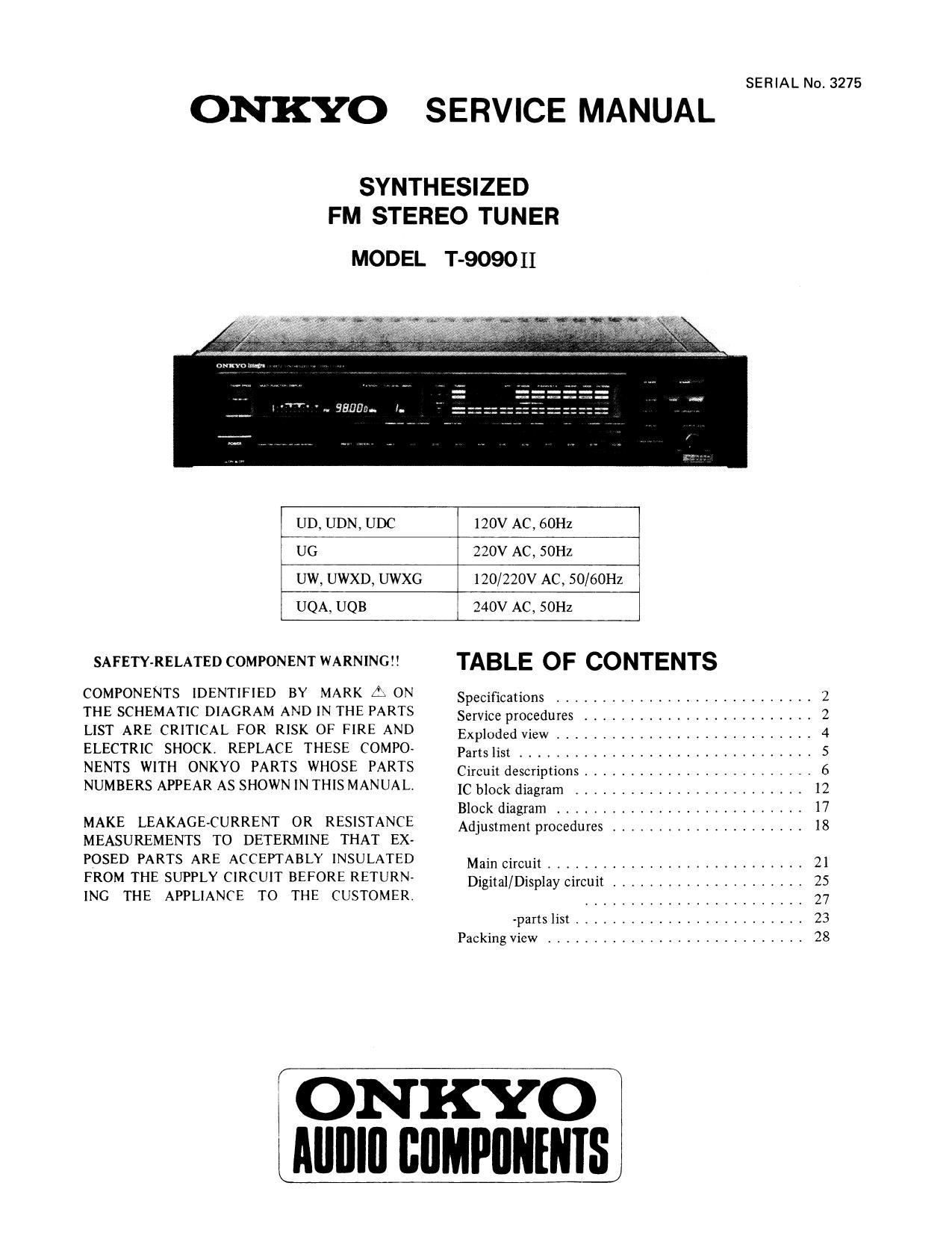Onkyo T 9090 Mk2 Service Manual
This is the 26 pages manual for Onkyo T 9090 Mk2 Service Manual.
Read or download the pdf for free. If you want to contribute, please upload pdfs to audioservicemanuals.wetransfer.com.
Page: 1 / 26
